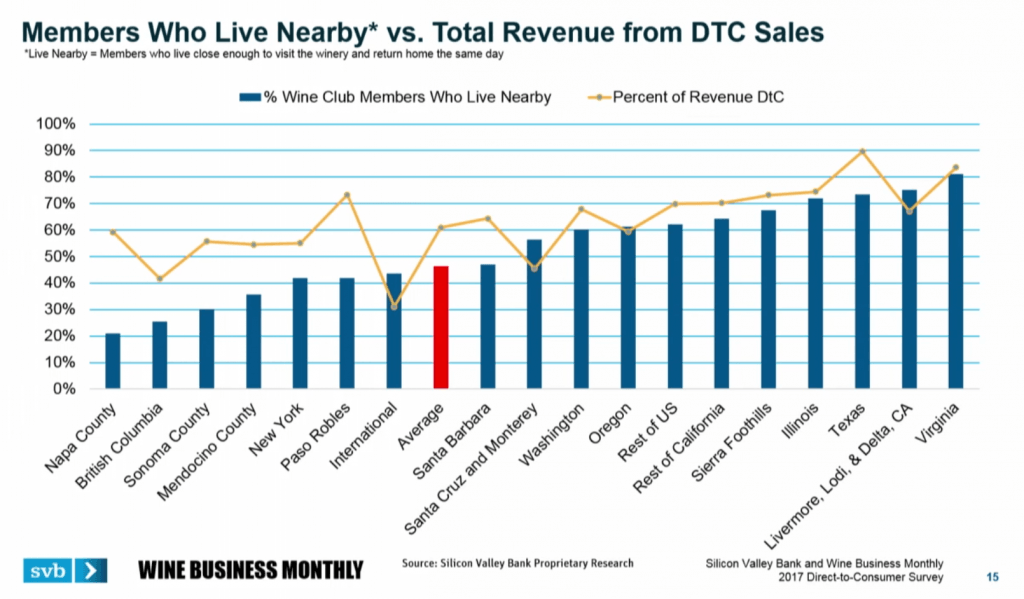Right now I’m working with several new wine brands and many start with a tasting room only. While we often hear how wine clubs are a great addition to annual income, what do the statistics tell us? Can a wine brand in Texas or Missouri have as much success as one in Napa?
Earlier this year Silicon Valley Bank’s Wine Division hosted a live videocast discussion of trends in direct-to-consumer wine sales focused on growth trends and strategies.
They talked about statistics like the below, which shows how much direct sales are from the tasting room vs. the wine club. The below chart tells us that no matter where your winery is located, a wine club can increase your revenue.
Keep scrolling for the full video below where the panel discussed some of the findings and compilation of responses from almost 850 wineries.
Are wine club members from nearby?
The panel also discussed how only 20% of Napa’s wine club members live in the Bay area vs. other regions like Virginia and Illinois, where the majority are local. See how each region breaks down here:

Knowing where your wine club members live can help shape your messaging and special events. For example: if you have a large amount of wine club members in a different state or city, you could fly there and do a special winemaker dinner. This will help extend how long they are wine members with your wine brand.
Other key tips:
- Work with your regional tourism office to grow regional pride. Think Drink Local. Think how people want to know where their food comes from and how it’s made.
- For your wine club, nurture the relationships by throwing wine club VIP parties where you ask each member to bring 3 friends. Those 3 friends often have similar tastes and demographics and can become future wine club members.
They also covered the following topics:
- Conversion rates of buyers
- Impact of venue choice on tasting room success
- Regional tasting room comparisons
- Club metrics
